Order Passeriformes Genus Cephalopterus Higher classification Umbrellabird | Phylum Chordata Family Cotingidae Scientific name Cephalopterus penduliger Rank Species | |
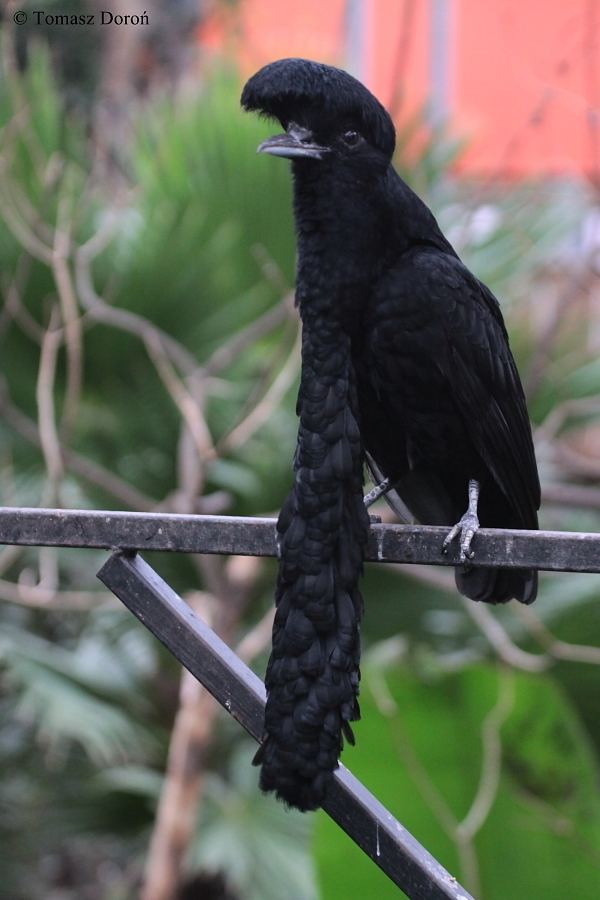 | ||
Similar Umbrellabird, Bird, Cotinga, Amazonian umbrellabird, Bare‑necked umbrellabird | ||
Long wattled umbrellabird
The long-wattled umbrellabird (Cephalopterus penduliger) is an Umbrellabird in the Cotinga family. Its common names include "Pájaro Bolsón", "Pájaro Toro", "Dungali" and "Vaca de Monte".
Contents
- Long wattled umbrellabird
- Long wattled umbrellabird eating oenocarpus fruit in the choc forests of ecuador
- Description
- Distribution and habitat
- Feeding
- Reproduction
- Conservation
- References
Long wattled umbrellabird eating oenocarpus fruit in the choc forests of ecuador
Description
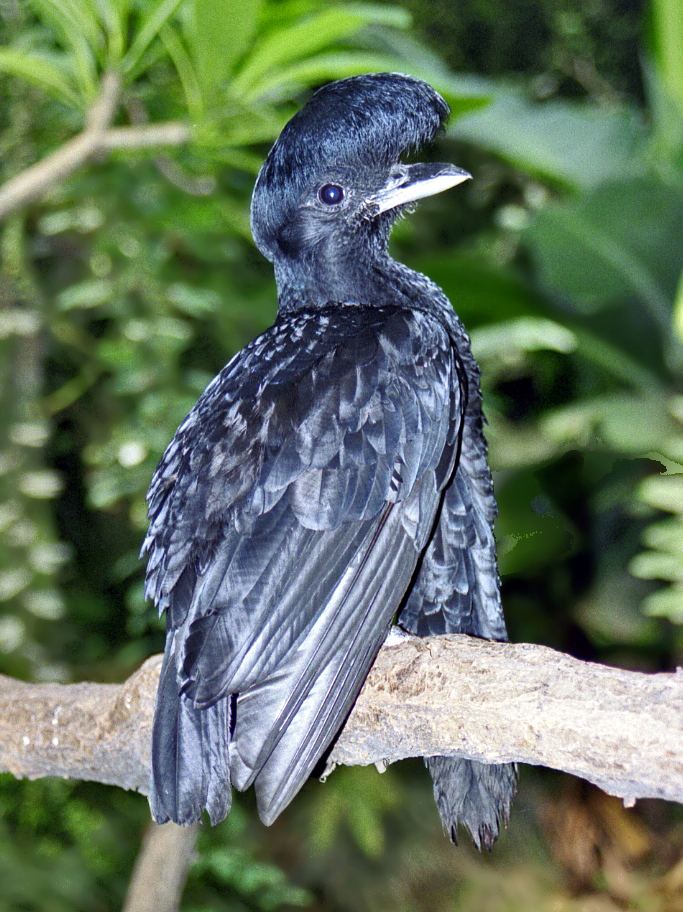
The male is 40–42 cm in height, with the female being slightly smaller at 35–37 cm. Both sexes are short-tailed and carry an erectile head crest; that of the male is slightly longer at 20–30 cm. The male is distinguished by a large throat wattle of feathers, while females and juveniles have no or a much smaller wattle. The length of the wattle can be controlled, and it is always retracted in flight. The male generally has black colored shafts in its feathers.
The long-wattled umbreallbird's specific name penduliger derives from Latin "pendulus", hanging, and refers to the wattle.
Distribution and habitat
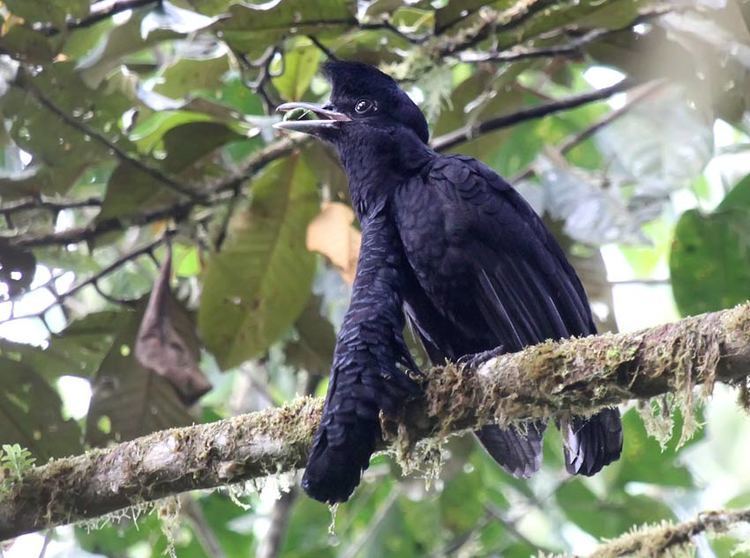
The species shows a high level of endemism and is found from the southwestern part of Colombia to the province of El Oro in Ecuador, in the bioregion of Tumbes-Chocó-Magdalena. It inhabits humid montane forests at 1,500-1,800 m above sea level on the ridges and sides of the Andes range.
Feeding
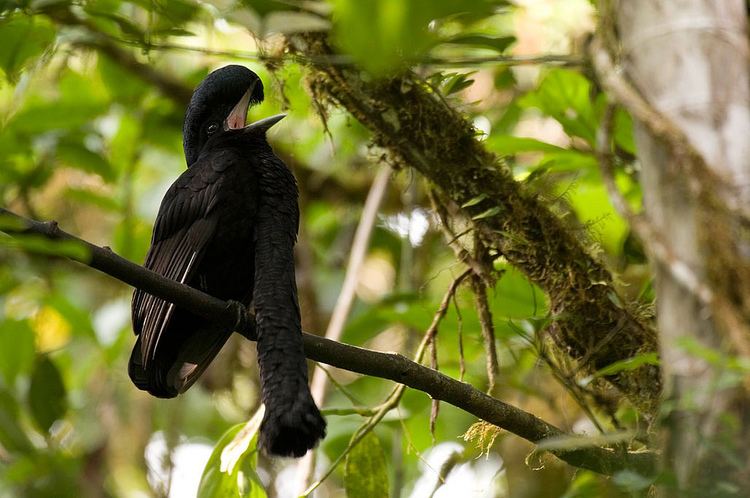
The species is mostly frugivorous and feeds on large fruit. The fruits of Arecaceae, Lauraceae and Myrtaceae are preferred. Invertebrates and small vertebrates are also taken.
Reproduction
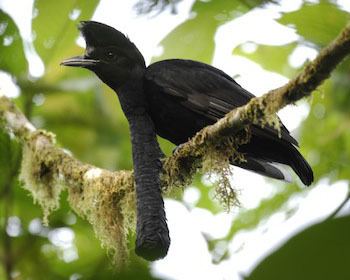
The long-wattled umbreallbird engages in lek mating, where the males congregate in common areas (leks) for display, which are visited by the solitary females. Females select a male with prominent secondary traits such as aggression and territorial behavior. Nests are built in trees or treeferns, and have been recorded at heights of 4.5–5 m above ground.

Clutch sizes in the genus Cephalopterus are generally low, and only one egg is laid per nesting attempt. Incubation lasts 27 or 28 days. Only the female incubates and cares for the nestling. She provides food for the nestling on average once per hour and includes invertebrates, vertebrates and regurgitated material.
Conservation
The species has been classified as Vulnerable by the IUCN. A total population of 6,000-15,000 mature individuals was estimated in 2012. It is thought to be under pressure from habitat destruction through deforestation and from hunting. The easy-to-locate lek mating areas make it particularly susceptible to trapping.
The long-wattled umbreallbird is present in several protected areas. It has been suggested that the consolidation of existing scattered reserves, as well as the nomination of several existing protected areas as biosphere reserves, would be very beneficial for the species. The curating of forest composition and reforestation have been pointed out as important approaches.
